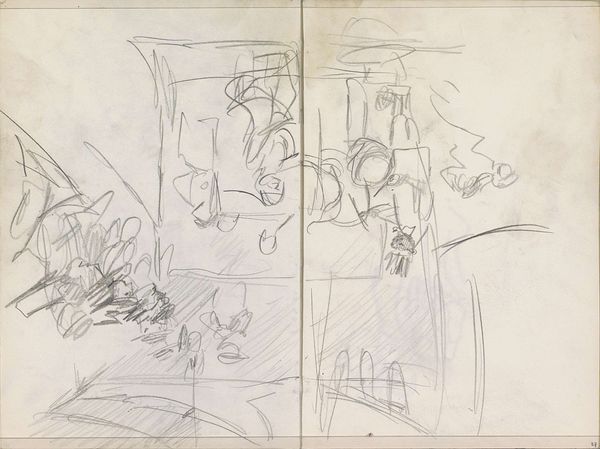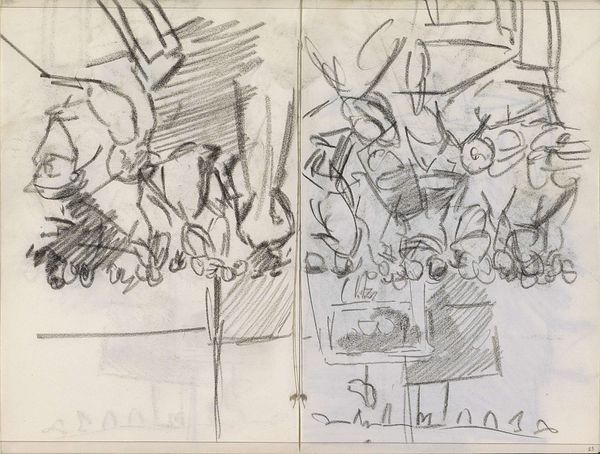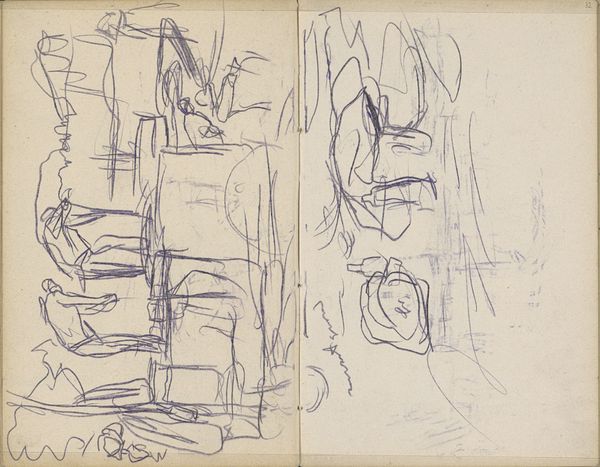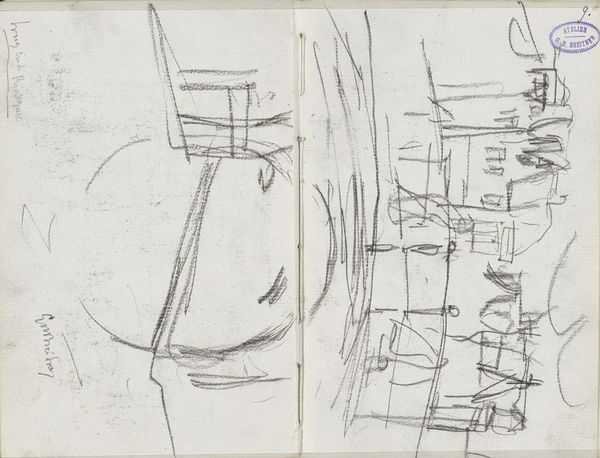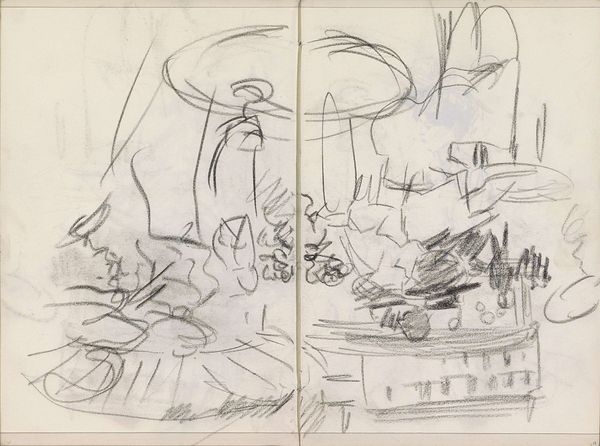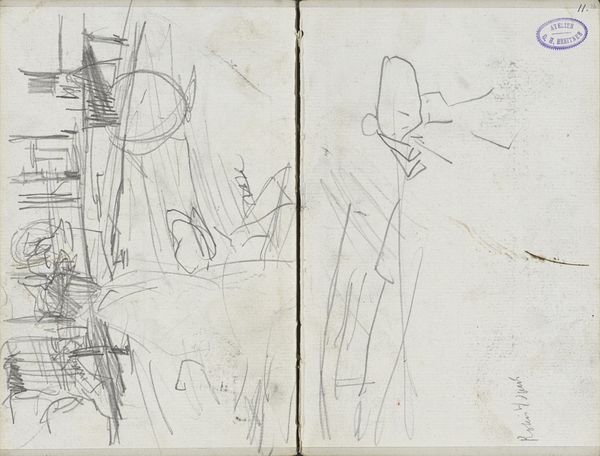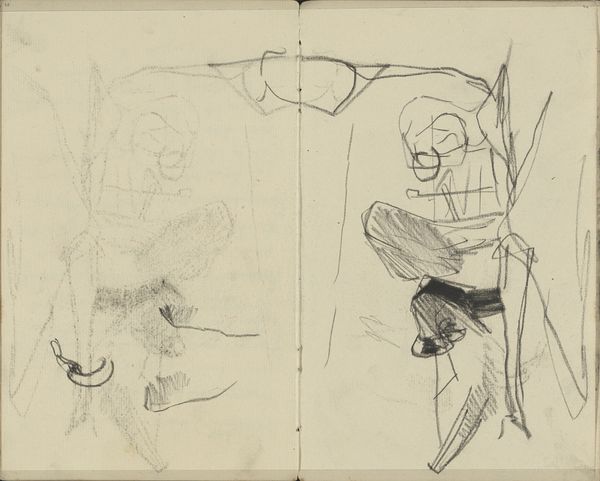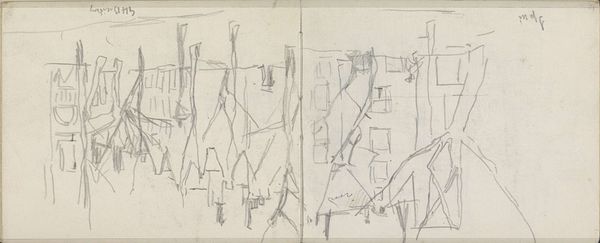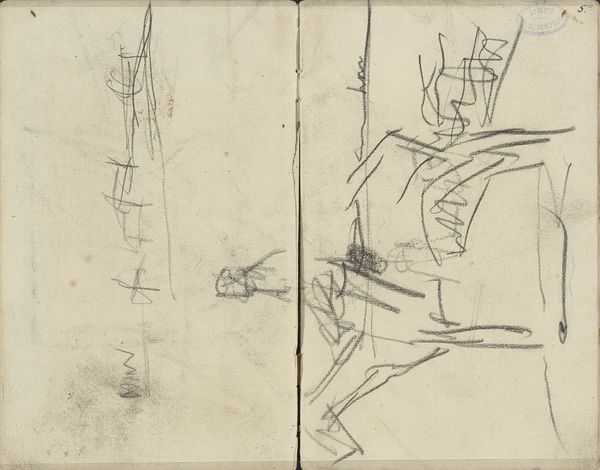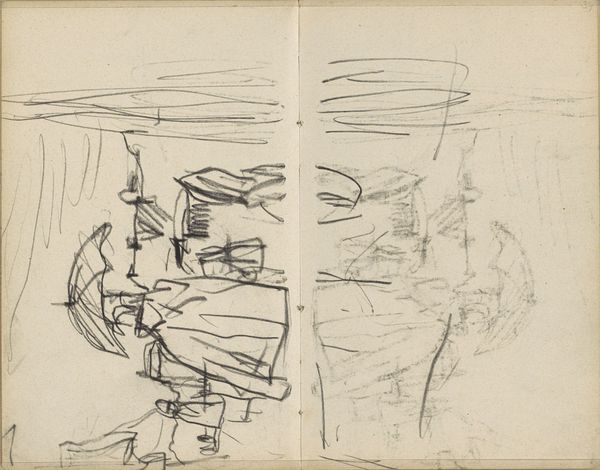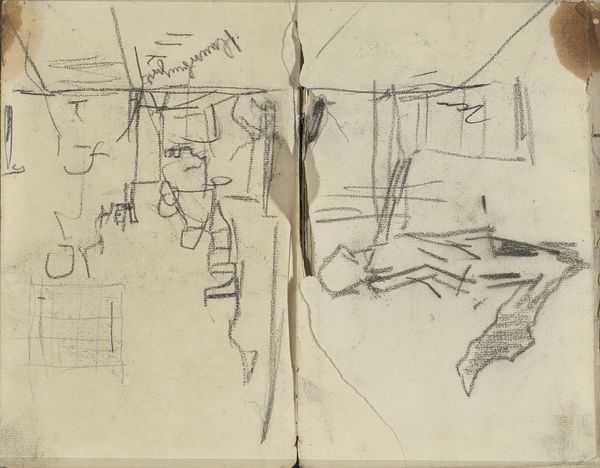
Copyright: Rijks Museum: Open Domain
Curator: Here we have a pencil drawing by Isaac Israels titled "Listeners Around a Group of Musicians," dating from 1875 to 1934. It's currently held in the Rijksmuseum collection. Editor: It feels like a fleeting moment, barely captured. All of the sketch lines create such energy. It is as though one has turned their head, ever so quickly. Curator: Indeed, the composition leads the eye in dynamic sweeps, guided by the angles of the seated listeners and their suggested instruments. Israels has prioritized the gesture, minimizing any true detail. Editor: It seems the sketch book constrained a high degree of finishing and refinement. The rapid lines and vague subject focus my attention to the process of the materiality, and wonder at what context and performance circumstances this raw sketch occurred. How do you imagine Israels’ interaction with the players to feel as a social circumstance? Curator: Semiotically, we can consider the positioning of the subjects; some clearly in shadow and perhaps out of earshot, others closest in direct reception of music itself. The gestural abstraction also invites various interpretations, allowing a space to ponder how class status, proximity to cultural consumption, and visual perspective might inflect how the audience decodes this drawing’s underlying power dynamic. Editor: Right, the use of simple pencil strokes to delineate forms reminds us that this sketch, while depicting a moment of musical engagement, is ultimately a material object birthed from a particular context and history that would be different if performed now. What kind of societal factors, and art process factors do you see influencing the creation and aesthetic meaning of Israels pencil on sketchbook process? Curator: A great observation. These choices point toward an investigation into the act of artistic perception itself. Israels doesn’t aim to offer a clear image, but suggests a relationship between the sound being made and the human act of visual seeing, almost attempting to locate a musical visuality. Editor: Perhaps one will take more active notice next time they see a musical act get captured for an artistic medium and the choices informing the audience for what reasons and perspectives are. Thanks for providing a better sense for Israels method as something in tandem with the society it portrays. Curator: Thank you. Considering the structural elements has helped understand this quick snapshot.
Comments
No comments
Be the first to comment and join the conversation on the ultimate creative platform.
